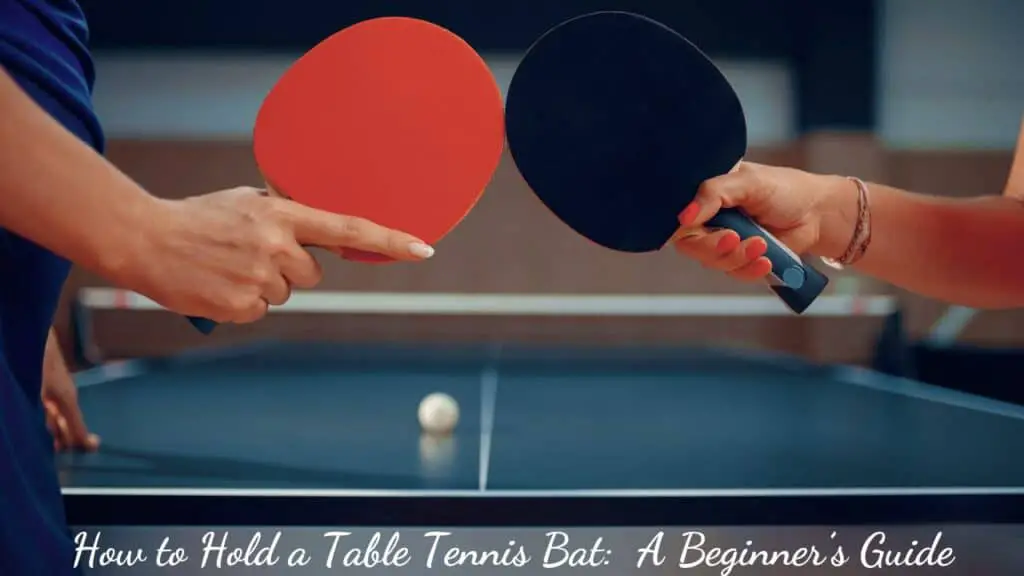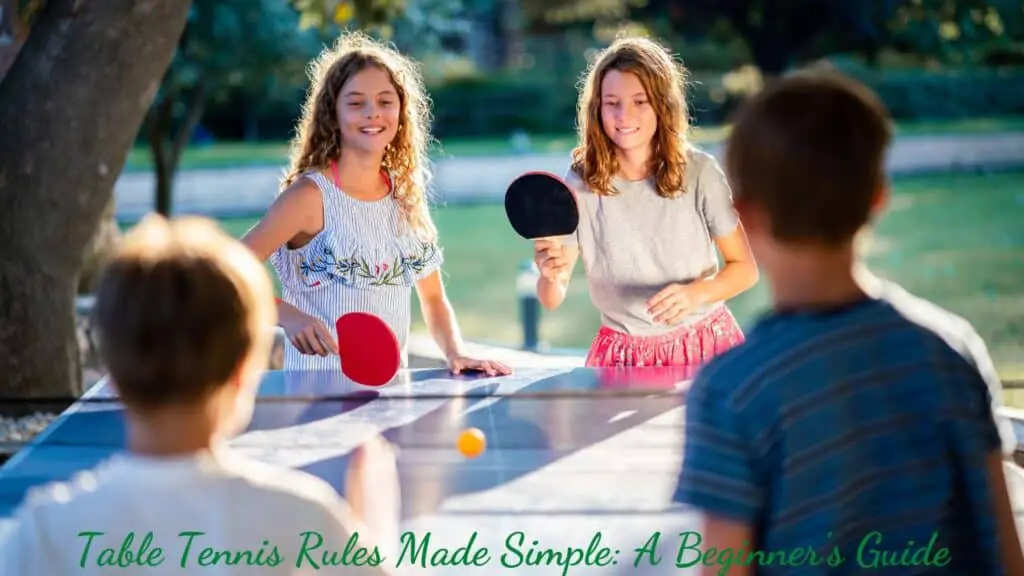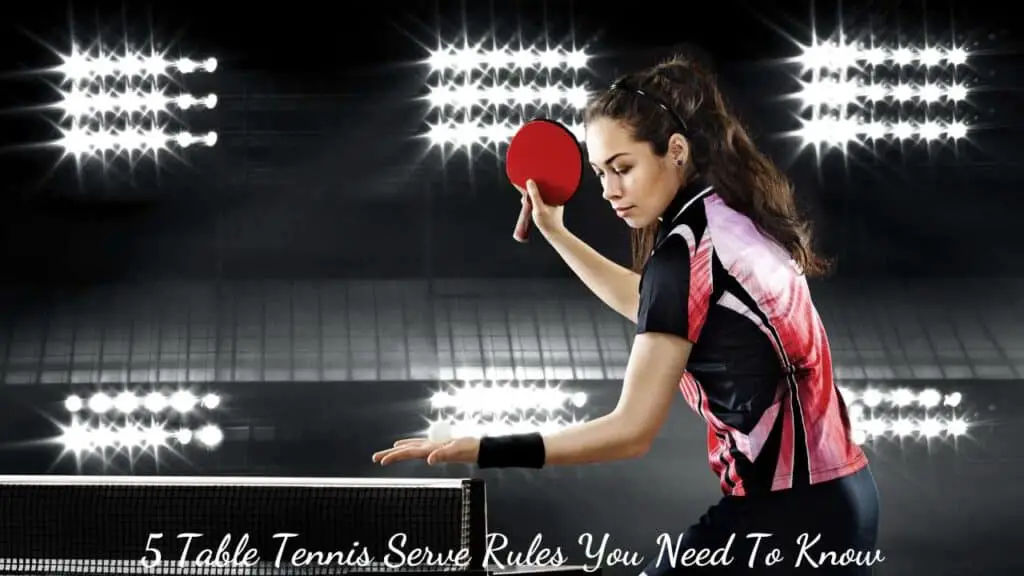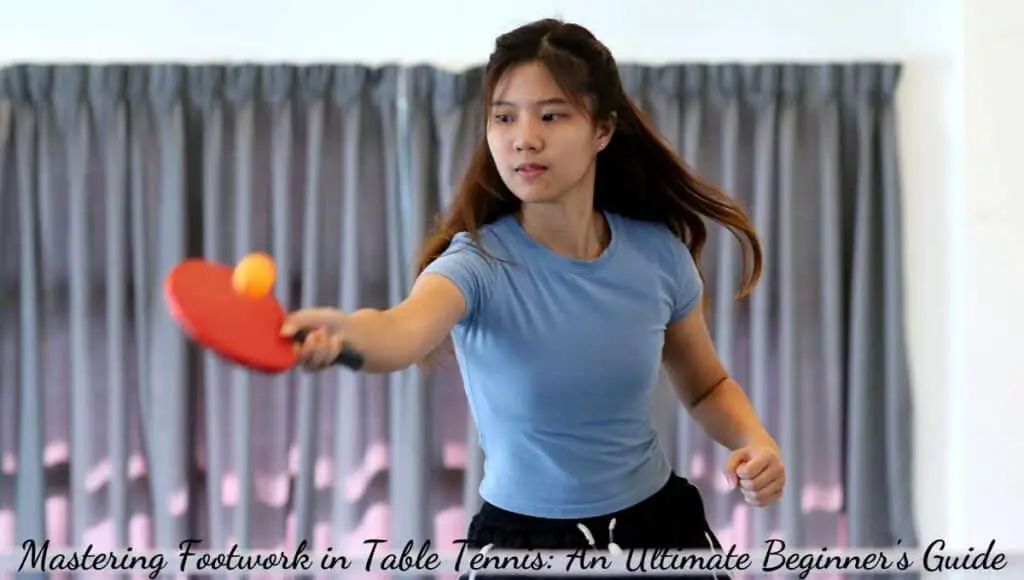How to hold a table tennis bat is the most crucial technique from a beginner’s point of view. It is the fundamental skill to which every other skill is related. If you don’t have a proper holding technique early, you will face difficulties at every stage to grow your table tennis skills.
But why do you need a proper grip? It’s because it helps you to guide the ball to the desired location. It gives you the sense of your bat angle to execute a proper shot. If your grip is not correct, you will lose control over your strokes and mess up your techniques.
Apart from some unconventional grips that are rarely used, here are two types of holding techniques.
- Shakehand grip
- Penhold grip
Shakehand Table Tennis Grip
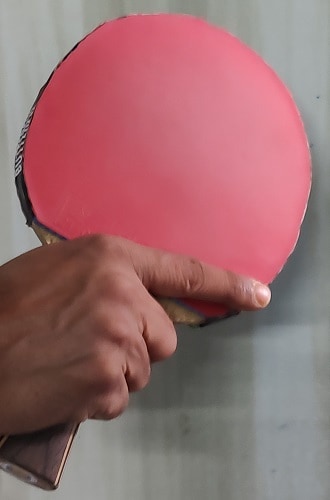
Out of the two, it is the most popular grip in table tennis. The name, “Shakehand” itself tells how to hold a table tennis bat. Try to hold the racket in a way that you are shaking hands with it. Hold the handle with three fingers, i.e. middle finger, ring finger, and pinkie. Free the other two fingers and place your index finger across the bottom of one side and your thumb across the bottom of the other side.
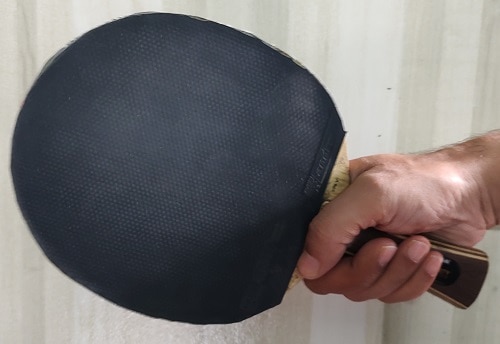
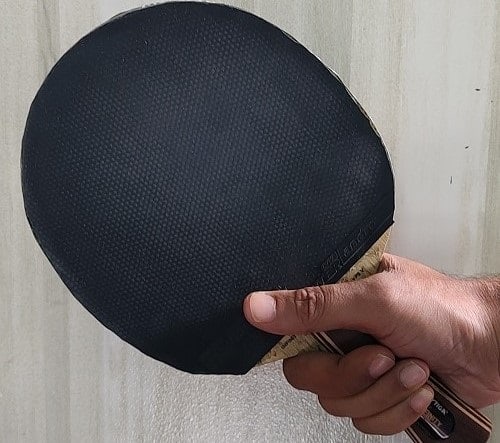
Shakehand grip is of two types which depend upon the placement of your thumb. If your thumb is across the edge of a blade, (The blade is the inner part of a racket) it is the Shallow Shakehand grip. In this grip, the involvement of your wrist is more which helps you to impart more power and spin.
Another is the Deep Shakehand grip where the thumb is placed on rubber (The rubber is the outer part of a racket) to give you more authority in the backhand stroke. This is relatively a firm grip for better control and placement.
Many experienced pro players switch over from Shallow Shakehand to Deep Shakehand during the transition from forehand (Dominant side of your body) to backhand stroke (Non-dominant side of your body) and vice versa.
Things to remember: Don’t hold the racket too tight. A rigid grip makes your wrist less flexible and it is not good for spin generation.
Positives of Shakehand Grip
- It is the most convenient way to hold a racket.
- It is an easy grip to learn and execute for beginners.
- You can effectively use both sides of your racket to play all types of shots on the forehand and backhand.
- Easy to impart power and spin both forehand and backhand side.
Negatives of Shakehand Grip
- A “Crossover Point” is the middle between the forehand and backhand side. In the Shakehand grip, you have to deal with this indecisive area whether to go for a forehand or backhand shot.
Penhold Table Tennis Grip
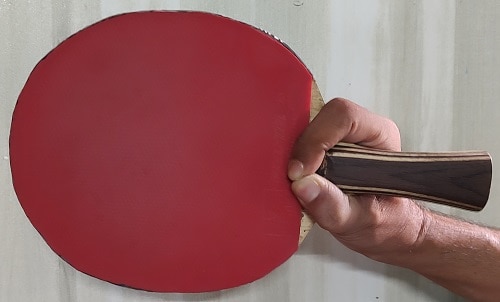
Penhold grip is like you are holding a pen. Hold the racket with your index finger and thumb in a way that they form a “C” shape across the bottom of the racket. The other three fingers act as a supporting role and are placed on the other side of the racket.
Penhold grip is mainly used by players from Asian countries like China, Japan, and South Korea. Penhold grip is of two types, Chinese and Japanese.
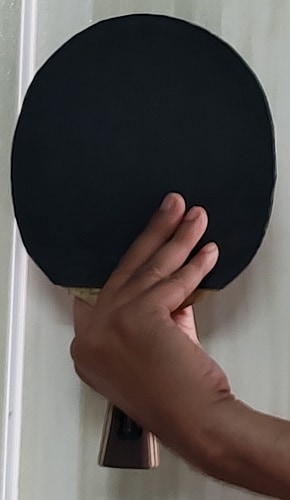
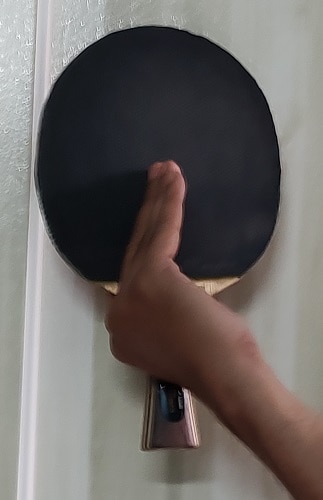
In the Chinese Penhold, the three supporting fingers are curled on the backhand side of the bat whereas in the Japanese Penhold, the supporting fingers are straightened.
Though the Japanese Penhold is great for forehand looping, it is hard to master this grip and is also very limited to the backhand side.
Positives of Penhold Grip
- The main advantage is the flexibility of the wrist. It is very easy to swing the racket with a Penhold grip.
- Due to more wrist action, it is easier to produce a strong forehand loop than the Shakehand grip
- No “Crossover Point” as the same side is used both for forehand and backhand.
- You can exhibit good control close to the table on defensive shots.
Negatives of Penhold Grip
- The huge disadvantage is the weakness of backhand shots. It feels awkward to hit the ball on your backhand side.
In modern table tennis, the importance of the backhand is huge. So to negate the difficulty of the Penhold grip, a similar new innovative Reverse Penhold Backhand grip (RPB) is used by some attacking players like Xu Xin, the famous Chinese player who uses both sides of the racket to impart heavy topspin.
How to Hold a Table Tennis Bat: The Most Common Mistake
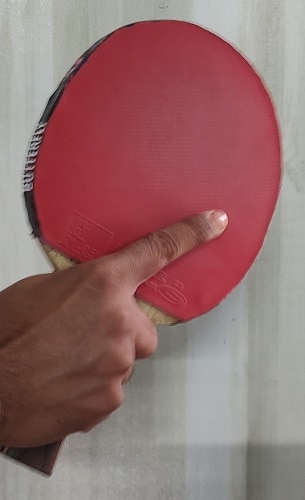
This is the most common fault that beginners or recreational players occasionally get habituated. By pointing the index finger upward, you may get some control over your forehand shots, but you block the area for your backhand shots, and at the same time it is also difficult to adjust the bat angle for switching from one stroke to another.
For a visual explanation, check the nice video uploaded by PingSkills
Suggested Topic:

